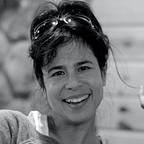My First Time With Online Learning
I was really nervous about taking an online class. I hadn’t taken a graded course in decades. I also had no online learning experience.
There are many learning models out there. I chose Neil D. Fleming’s VARK Modalities to describe my learning style. VARK stands for: Visual, Aural/Auditory, Read/Write, Kinesthetic.
How I used to learn was a combination of the four methods. I would be in a classroom setting with an instructor and students. Subject matter would be taught through lectures, textbooks, and handouts. I would either study solo or with others at the library. Highlighting passages in text books and supplemental literature, and creating flashcards were a few methods I applied to memorize and retain what I was being taught.
Quizzes and exams were completed in class. Essays, term papers, were either handwritten in pen or typed on a typewriter.
My recent online learning experience still incorporated a combination of VARK. All that was required though was a laptop or PC and high speed internet. Each core module had required reading. Embedded in these readings were: video animations, audio interviews (with downloadable transcripts), and fun interactive knowledge tests.
Instead of class, I was in a cohort. Instructors were Program Coordinators. The classroom experience was once a week through Zoom Video conferencing. Interactions with cohort and Program Coordinators were through the communication platform, Slack.
Quizzes were done online. Assignments were downloaded and uploaded through online course platform, Canvas.
Both learning opportunities engaged a combination of VARK processes. The big differences between traditional learning and online learning for me were: location, method, and materials. Especially method and materials.
I recognized that I wasn’t completely comfortable with doing all of my learning solely by keyboard and screen. In VARK terms, the Read/Write and Kinesthetic aspects were lacking for me. I found that printing up the course description, syllabus, and class assignments were very helpful. I also took handwritten notes from my reading materials and once a week Zoom conferences. Incorporating some printed materials and taking notes greatly improved my online learning experience.
I was pleasantly surprised that learning online wasn’t awkward. It was only different. Once I was familiarized with the format and the additional tools the course required, I adapted. As a combination VARK learner, it was my responsibility to fill in my learning gaps with the appropriate tools.
My key discovery was that the best preparation I had for learning online was my past work experience. Proficiency with the following programs: Microsoft Office, Google Office, Adobe Acrobat, and PowerPoint, bridged my two learning experiences.
Adapting and implementing additional tools helped me succeed with online learning. Whether it’s VARK or another learning model, knowing how you learn best will better enhance your learning experience.
